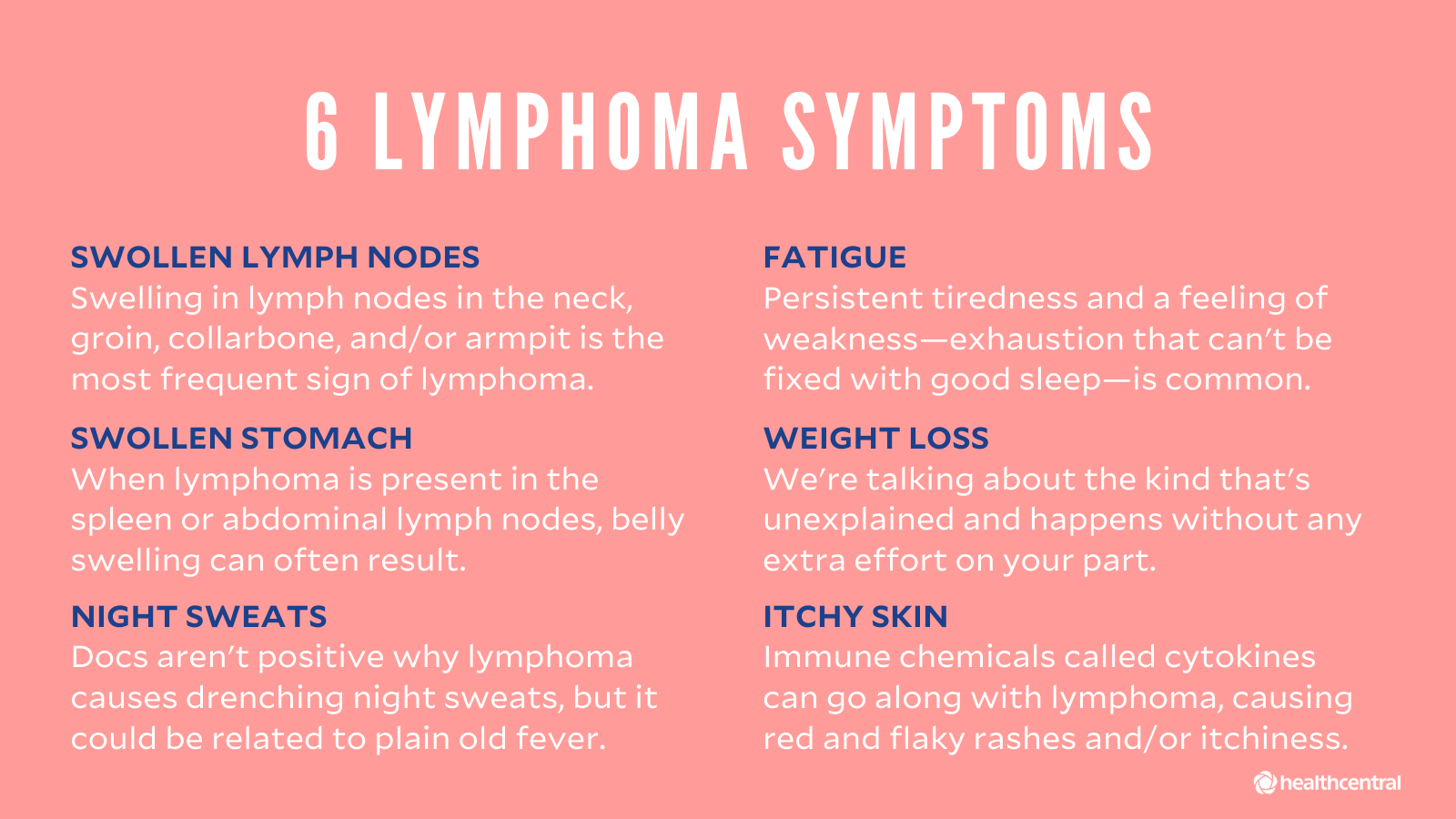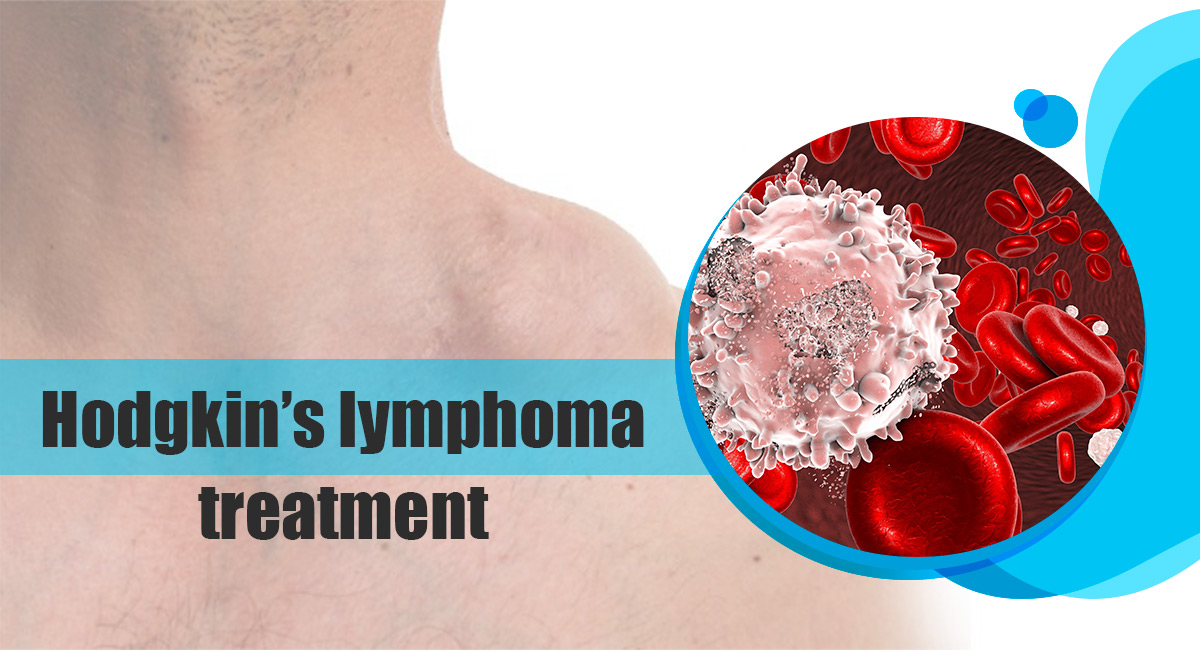Conquering Hodgkin’s Lymphoma: A Journey of Resilience and Hope
Introduction
Hodgkin’s Lymphoma is a formidable adversary, but it’s a battle that can be won with determination, resilience, and unwavering hope. In this article, we will delve into the journey of conquering Hodgkin’s Lymphoma, providing insights and inspiration for those on this challenging path.
Understanding Hodgkin’s Lymphoma

Before embarking on the journey of conquering Hodgkin’s Lymphoma, it’s crucial to understand this unique form of cancer. Hodgkin’s Lymphoma affects the lymphatic system, specifically the lymph nodes. It can also spread to other organs.
Symptoms of Hodgkin’s Lymphoma

The symptoms of Hodgkin’s Lymphoma can vary from person to person, but some common signs to be aware of include:
- Swollen Lymph Nodes: Enlarged, painless lymph nodes in the neck, armpits, or groin are a hallmark symptom.
- Fatigue: Persistent, unexplained fatigue that doesn’t improve with rest.
- Fever: Recurrent fevers without any apparent cause.
- Night Sweats: Drenching night sweats that may soak through clothing and bed sheets.
- Unexplained Weight Loss: Significant and unintentional weight loss.
- Itchy Skin: Pruritus or itchy skin, sometimes without a rash.
- Loss of Appetite: A decreased appetite and a feeling of fullness, even after a small meal.
- Pain or Discomfort: Pain in the affected lymph nodes or in the chest area, particularly after consuming alcohol.
- Coughing or Shortness of Breath: If the disease affects the chest, it can lead to symptoms such as coughing, chest pain, or difficulty breathing.
- Generalized Weakness: A feeling of overall weakness and decreased physical stamina.
Diagnosis and Staging

When it comes to diagnosing Hodgkin’s Lymphoma, healthcare professionals employ a combination of methods to ensure accuracy. The process typically involves:
1. Biopsies
Biopsies are often the first step in diagnosing Hodgkin’s Lymphoma. During a biopsy, a small sample of lymphatic tissue is extracted for examination. This can be done through a fine-needle aspiration, core needle biopsy, or surgical biopsy. The obtained tissue sample is then carefully analyzed under a microscope to determine if cancerous cells are present.
2. Imaging Tests
Imaging tests play a vital role in assessing the extent of the disease and identifying affected areas within the body. Common imaging techniques include:
- CT Scans: Computed Tomography scans provide detailed cross-sectional images, allowing doctors to locate enlarged lymph nodes and assess their size and position.
- PET Scans: Positron Emission Tomography scans help identify areas with increased metabolic activity, which is often a sign of cancer cells.
- MRI Scans: Magnetic Resonance Imaging can provide more detailed images of lymph nodes and surrounding tissues, aiding in the staging process.
3. Staging

Staging is a crucial step that helps determine how advanced the Hodgkin’s Lymphoma is and how far it has spread. The most commonly used staging system for Hodgkin’s Lymphoma is the Ann Arbor Staging System, which categorizes the disease into four main stages:
- Stage I: The cancer is limited to a single lymph node region or one organ.
- Stage II: The cancer involves two or more lymph node regions on the same side of the diaphragm or one organ and nearby lymph nodes.
- Stage III: The cancer is found in lymph nodes on both sides of the diaphragm. It may also involve a portion of an organ or tissue.
- Stage IV: The cancer has spread widely and may affect multiple organs, including the bone marrow.
Staging is crucial as it guides healthcare professionals in determining the most appropriate treatment plan for the patient, considering the extent of the disease. Accurate staging ensures that treatment is tailored to the specific needs of each individual, optimizing the chances of successful management and recovery.
Treatment Options

Treatment options for Hodgkin’s Lymphoma typically depend on the stage of the disease, the patient’s overall health, and other individual factors. Here are some common treatment modalities:
- Chemotherapy: Chemotherapy is a standard treatment for Hodgkin’s Lymphoma. It involves the use of drugs to kill cancer cells or stop their growth. Various chemotherapy regimens are available, and they may be used alone or in combination with other treatments.
- Radiation Therapy: Radiation therapy uses high-energy X-rays or other forms of radiation to target and destroy cancer cells. It is often used when the disease is limited to one area or to shrink tumors before or after chemotherapy.
- Stem Cell Transplantation: Stem cell transplantation, also known as a bone marrow transplant, is sometimes used for individuals with relapsed or refractory Hodgkin’s Lymphoma. It involves replacing damaged bone marrow with healthy stem cells, either from the patient (autologous) or a donor (allogeneic).
- Immunotherapy: Immunotherapy drugs, such as checkpoint inhibitors (e.g., pembrolizumab, nivolumab), work by enhancing the body’s immune system to target and attack cancer cells. They are used in cases where other treatments have not been effective.
- Targeted Therapy: Targeted therapy drugs are designed to target specific molecules or pathways involved in cancer growth. While not a first-line treatment for Hodgkin’s Lymphoma, they may be considered in certain situations.
- Clinical Trials: Participation in clinical trials may offer access to innovative treatments and therapies that are still under investigation. This option is often available for individuals with refractory or relapsed Hodgkin’s Lymphoma.
- Supportive Care: Supportive care measures, such as pain management, nutritional support, and psychological counseling, are essential components of the treatment plan to manage side effects and improve the patient’s quality of life.
read more about The Latest Breakthroughs in Cancer Treatment
The Emotional Impact
A cancer diagnosis is emotionally taxing for both patients and their loved ones. We’ll address the emotional aspects of battling Hodgkin’s Lymphoma and offer guidance on coping with the psychological challenges.
Resilience and Hope: Real-Life Stories
Real-life stories of individuals who have conquered Hodgkin’s Lymphoma serve as beacons of hope. We’ll share inspiring tales of resilience, determination, and ultimate victory over the disease.
Coping Strategies
Coping with Hodgkin’s Lymphoma requires a multi-faceted approach. This section will provide practical strategies for managing symptoms, side effects, and emotional challenges throughout the journey.
Support Systems
No one should face Hodgkin’s Lymphoma alone. We’ll emphasize the importance of a robust support system, including friends, family, healthcare professionals, and support groups.
Advances in Hodgkin’s Lymphoma Research
In the realm of medical science, progress is an ever-constant force, and this holds true for the field of Hodgkin’s Lymphoma research as well. Over the years, relentless efforts by dedicated researchers and clinicians have led to significant advancements in our understanding and management of this complex disease. In this section, we will delve into some of the recent breakthroughs and their potential impact on the lives of patients.
Precision Medicine
Immunotherapy Revolution
Reduced Radiation Therapy
Targeted Therapies
CAR T-Cell Therapy
These recent breakthroughs represent a beacon of hope for individuals diagnosed with Hodgkin’s Lymphoma. As research continues to advance, the outlook for patients is increasingly optimistic. However, it’s crucial to remember that not all breakthroughs are universally applicable, and treatment decisions should always be made in consultation with healthcare professionals who consider the individual patient’s circumstances.
Lifestyle Choices and Recovery
Maintaining a healthy lifestyle during and after treatment can significantly affect recovery. We’ll offer guidance on nutrition, exercise, and other lifestyle factors that can contribute to a successful journey.
Transitioning to Life After Treatment
Life after Hodgkin’s Lymphoma treatment represents a new beginning. In the aftermath of treatment, it’s important to address the challenges and embrace the opportunities that come with transitioning to a post-treatment life.
Conclusion
Conquering Hodgkin’s Lymphoma is not merely a medical endeavor; it’s a testament to the human spirit’s resilience and determination. As you embark on this journey, remember that hope and support are your most potent allies.
FAQs
1. Is Hodgkin’s Lymphoma curable?
- Yes, Hodgkin’s Lymphoma is often curable, especially when diagnosed early and treated promptly.
2. What are the common symptoms of Hodgkin’s Lymphoma?
- Common symptoms include swollen lymph nodes, fatigue, fever, and night sweats.
3. How long does Hodgkin’s Lymphoma treatment typically last?
- Treatment duration varies depending on the stage and type of Hodgkin’s Lymphoma but can range from several months to over a year.
4. Are there any long-term side effects of Hodgkin’s Lymphoma treatment?
- Some treatments may have long-term side effects, but they vary from person to person. Discuss potential side effects with your healthcare team.
5. Can lifestyle changes improve the outcome of Hodgkin’s Lymphoma treatment?
- Yes, adopting a healthy lifestyle can positively impact treatment outcomes and overall well-being.







 Viesearch - The Human-curated Search Engine
Viesearch - The Human-curated Search Engine

6 Comments